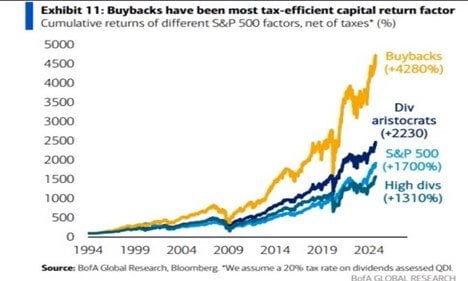Asset management vs wealth management, which is right for you?
I’ll be honest, I get excited when folks like you come to me with questions like this. You’re at a point in your life where you are thoughtfully...
5 min read
 Laura Herrington
:
Jun 13, 2023 11:29:00 AM
Laura Herrington
:
Jun 13, 2023 11:29:00 AM

Think of all the different investment strategies you’ve heard about throughout the years. Remember the Turtle Traders in the 1980s? What about the Dogs of the Dow in the early 1990s?
Then in the 2000s, Index Funds and ETFs became increasingly popular, followed by the rise of High-Frequency, Computerized Trading from 2010 to the present.
Now, you may be asking yourself:
Though likely not the most important element of a financial plan, investment strategy often receives a disproportionate amount of focus and attention from financial news outlets, financial advice literature, and financial advisors.
Investments are sexy.
They’re exciting.
They can attract and hold attention like little else in the financial planning world.
It may come as a surprise to hear us say that there is no one “right” way to invest. There are actually about as many different investment models as there are names you can think up to keep them straight, and many different methods can work.
Most investment systems can be grouped into one of two broad categories: active or passive investing. In this article, I want to do a comparison of these two strategies, as well as touch on a third commonly-used but rarely-successful strategy – what we’ll call discretionary investing.
Active investment strategy refers to any type of hands-on investing in which trades are placed by an investor or portfolio manager in response to specific prices, rules, or events as outlined in his trading system.
The goal may be to achieve short-term profits, limit large losses, and/or capitalize on trends that may outperform the overall market.
This may be an attractive option for investors who are nearer to or already in retirement; active investing may help manage their risk by moving out of more aggressive positions during periods of economic uncertainty and/or market downturn.
Active investing may also be good for investors with specialized investment needs such as targeted diversification, income, or return goals.
In many of our models at Sound Financial Strategies Group, we take an active approach. Our Dividend Growth Equity model is a great example:
Another great example is seen in our Dynamic Fixed Income sleeve, which is used for the bond portion of our balanced and conservative models:
Also known as “buy-and-hold” investing, a passive investment strategy refers to buying a broadly diversified group of stocks and bonds with the intent to hold them for the long-term.
The goal is long-term growth that neither outperforms nor grossly underperforms the overall market. This is based on the fact that historically, over long periods, both stocks and bonds have produced positive returns — though with significant drawdowns during market declines.
This may be ideal for the investor who has a long time horizon. Because stocks and bonds have produced positive returns over long periods, the investor needs a long investment period to achieve similar results.
Passive investing may also be good for investors who value simplicity and tax efficiency over the potential for greater performance.
One popular strategy is buy-and-hold index investing, made famous by founder of The Vanguard Group, John C. Bogle.
Create a well-diversified portfolio of stocks and bonds using index funds – low-cost mutual funds that seek to track the performance of their underlying index. You could do this with as few as 3 funds:
As part of your asset allocation strategy, choose a stock/bond mix that is in line with your risk tolerance and your time horizon.
For example, if you’re 40, you plan to retire at 65, and you have a moderately high tolerance for market risk, a portfolio composed of 50% US stocks, 20% international stocks, and 30% bonds may be ideal for you.
Over time, your investments will drift away from your desired asset allocation. However, regular rebalancing (quarterly, annually, etc.) can help to get your portfolio back on track.
As you get nearer to (or deeper into) retirement, scale back your risk by methodically reducing your stock holdings and increasing bonds, annuities, or other guaranteed investment options.
Both active and passive investment strategies can work quite well. They are both systematic and rules-based, and if followed correctly, both methods can limit the destructive role emotions often play in our investment decisions.
Now let’s look at a third strategy. We’ll call it a discretionary investment strategy.
This refers to investment decisions based on emotions (primarily fear and greed), intuition, and gut-feeling. This “strategy” is non-systematic, and definitely not rules-based. The goal is usually to experience positive emotion or escape from negative emotion, with the hope that everything will somehow work out ok (positive investment performance would be nice).
Discretionary investing is not a viable long-term investment strategy for anyone.
Yes, this approach can feel exciting.
It may even feel “right,” provide you something to talk about at parties, and you may even get lucky on a handful of occasions. However, the potential is high for catastrophic losses and ruining your retirement plans, as there is no system for decision-making or pre-defined methods for course correction.
This third strategy is based on emotions and gut feelings, and it simply does not result in long-term investment success — in fact, our role is to help you avoid discretionary investing altogether!
What does result in long-term success is a well-planned, rules-based methodology that you can stick with over your entire investment career. For you, that may be an active momentum strategy, it may be buy-and-hold index investing, or it could be something completely different altogether.
At Sound Financial Strategies Group, our number one desire is to match you with a financial plan, including an investment strategy, that fits you and enables you to achieve your financial goals.
Have questions or want to start a conversation? We’re here to simplify the complex and help you take the right next step. Reach out and start a conversation or ask your question today.

I’ll be honest, I get excited when folks like you come to me with questions like this. You’re at a point in your life where you are thoughtfully...

If you’re reading this, you likely have a goal in front of you that is challenging you to think about investment planning for your college endowment...

If you’re a smart investor who goes out of their way to stay informed (I salute you), getting a clear picture of what is happening in the U.S. stock...

A ProShares article written in June 2024 highlighted a unique opportunity for investing in dividend stocks known as the Aristocrats. These are...

How Do You Feel About Your Financial Future? Most people are frustrated, confused, and even afraid for their financial future. Have you ever felt...